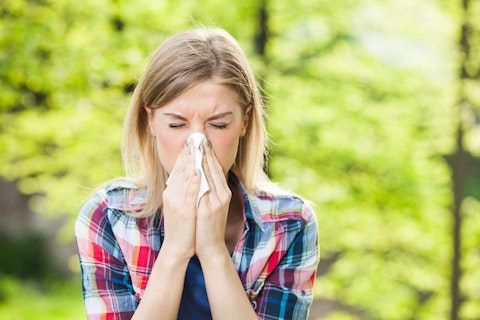In this article, we will be taking a look at the 30 cities where you don’t want to get sick. If you do not want to learn about the global health market, straight to the 7 Cities Where You Don’t Want to Get Sick.
In the hustle and bustle of urban life, falling ill is an inconvenience no one desires, but in certain cities worldwide, it can be more than just an inconvenience – it can be a daunting prospect. From inadequate healthcare infrastructure to high pollution levels, some urban centers pose significant challenges for those seeking medical assistance. In this exploration of “Cities Where You Don’t Want to Get Sick,” we delve into the factors that make these locales particularly concerning for health emergencies and the implications for residents and visitors alike.
The Global Health Market: Challenges, Concerns, and Growth Opportunities
The global health market encompasses various sectors like hospitals, pharmaceuticals, health insurance, medical devices, and diagnosis tests. The United States stands out in North America, with healthcare expenditures exceeding $4.4 trillion in 2022. The US health market faces challenges such as soaring costs, limited access, disparities in quality and outcomes, physician shortages, and issues like the opioid epidemic and mental health services shortage.
Europe’s healthcare market faces diverse challenges, including an aging population, service quality disparities, cost containment, workforce imbalances, and standardization in health technology adoption. Germany and France spend over 11% of their GDP on healthcare.
In Asia, healthcare spending surpassed $1.8 trillion in 2019, primarily driven by China, Japan, and India. Challenges in the region include disparities in healthcare access, a shortage of professionals, urbanization leading to a burden of non-communicable diseases, and issues of affordability and workforce development.
Analyzing Disease Outbreaks in Dense Urban Centers is a critical issue globally. Disease outbreaks in densely populated urban areas pose significant challenges due to high population density facilitating rapid disease spread. Surveillance systems are crucial for early detection and response to epidemics. According to a report by the World Health Organization (WHO), outbreaks of communicable diseases in urban centers can cost billions of dollars in economic losses. For instance, the Ebola outbreak in West Africa in 2014 resulted in an estimated financial loss of $2.2 billion. In addition, the COVID-19 pandemic has caused significant economic losses globally, with the International Monetary Fund (IMF) projecting a contraction of 5.8% in the global economy in 2021.
Financial statistics related to the global health market indicate its immense value and growth trajectory. The global healthcare market was valued at approximately $7,975.87 billion in 2023 and is projected to reach $9,816.85 billion by 2027. The digital health market is also thriving, with a projected revenue value of $549.7 billion by 2028 and an estimated compound annual growth rate (CAGR) of 25.0%. These financial statistics underscore the significance and potential for growth within the global health sector.
Addressing Healthcare Disparities in Urban Communities and Corporate Mitigation Strategies
Health disparities in urban communities, mainly affecting non-white residents, are a significant concern due to factors like inadequate engaged care frameworks and social determinants of health (SDoH), such as limited resources and access to providers. Research indicates that rural residents have less access to health information sources compared to urban residents, with structural barriers like limited media exposure impacting their access. A recent study found that rural patients access healthcare services less frequently than urban counterparts despite having more health concerns, revealing disparities in healthcare utilization.
Healthcare disparities in the United States result in significant financial costs, with estimates suggesting that the direct and indirect costs of health inequalities are around $309 billion annually. For example, racial and ethnic minorities in the US are more likely to experience preventable hospitalizations, leading to higher healthcare costs. Furthermore, healthcare disparities lead to lost productivity and decreased economic output. Studies suggest that eliminating racial and ethnic disparities in healthcare could result in financial gains of up to $230 billion annually. By addressing healthcare disparities, we can not only improve health outcomes but also positively impact the economy and society as a whole.
Corporate operations in urban settings must address healthcare disparities between rural and urban populations by improving employee access, considering factors like insurance, economics, transportation, and education. Business continuity plans should include tailored healthcare strategies to bridge the urban-rural gap, considering the unique challenges different demographics face for comprehensive health risk mitigation.
According to a report by the Bureau of Labor Statistics 2020, private industry employers spent an average of $2.73 per hour working on employee healthcare benefits, which amounts to approximately 7.6% of total employee compensation costs. In addition, the global corporate wellness market was valued at $53 billion in 2020 and is projected to reach $74.9 billion by 2030, growing at a CAGR of 4.47% from 2021 to 2027. These statistics highlight corporations’ significant financial investments in ensuring their employees’ health and well-being.
Johnson & Johnson (NYSE:JNJ) updates its visual identity to highlight its global health commitment, emphasizing breakthrough treatments in Immunology, Neuroscience, Cardiovascular, etc., under its pharmaceutical segment, now named Johnson & Johnson Innovative Medicine. The MedTech segment prioritizes smart, minimally invasive healthcare solutions, with recent successes including expansion into areas like robotic surgery. Johnson & Johnson (NYSE:JNJ) will focus on pharmaceuticals and medical technology, with an expected $60 billion in drug revenues by 2025. The company aims to drive growth through new product launches and increased sales of existing products across various therapeutic areas like oncology

Copyright: djoronimo / 123RF Stock Photo
Our Methodology
Our methodology draws on data from the Centers for Medicare & Medicaid Services (CMS) and other reliable sources to create a comprehensive index assessing hospital care quality in U.S. metro areas. This index evaluates mortality rates within 30 days of admission, readmission rates within 30 days of discharge, and preventable hospitalizations. We focus solely on unplanned readmissions and mortality within the 30-day window to ensure accuracy. However, it’s crucial to acknowledge the limitations of our approach, as factors such as patient frailty and chronic illnesses may disproportionately affect certain hospitals, especially those serving low-income populations. These considerations are vital for interpreting and contextualizing our findings effectively.
Here is our list of the 30 cities where you don’t want to get sick.
30 Cities Where You Don’t Want to Get Sick
30. Mobile, AL
30-day hospital readmission rate: 15.6%
30-day mortality rate: 13.2%
Preventable hospitalizations: 60.7 per 1,000 Medicare enrollees
No. of physicians: 65.6 per 100,000
Median household income: $43,061
Mobile, Alabama, stands among cities where you don’t want to get sick, with high rates of diabetes (13.1%) and obesity (36.4%), along with 12.7% lacking health insurance. Environmental factors like air quality hazards contribute to health risks. Influenza-like illnesses are increasing, and COVID-19 has had a notable impact. Treatment expenses for prevalent health issues could be substantial, especially for uninsured individuals.
29. Beckley, WV
30-day hospital readmission rate: 15.7%
30-day mortality rate: 12.5%
Preventable hospitalizations: 69.6 per 1,000 Medicare enrollees
No. of physicians: 74.4 per 100,000
Median household income: $38,917
Beckley, West Virginia, faces significant health challenges with high rates of obesity, arthritis, diabetes, cardiovascular disease, and respiratory diseases. The city also reports a notable percentage of adults in poor health. Leading causes of death include heart disease, cancer, accidents, respiratory diseases, and diabetes.
28. Goldsboro, NC
30-day hospital readmission rate: 15.7%
30-day mortality rate: 14.3%
Preventable hospitalizations: 47.6 per 1,000 Medicare enrollees
No. of physicians: 51.6 per 100,000
Median household income: $40,791
27. Gulfport-Biloxi, MS
30-day hospital readmission rate: 15.9%
30-day mortality rate: 13.1%
Preventable hospitalizations: 59.5 per 1,000 Medicare enrollees
No. of physicians: 50.9 per 100,000
Median household income: $47,444
Gulfport-Biloxi, Mississippi, stands among one of the cities where you don’t want to get sick, faces health challenges with significant percentages of uninsured individuals under 65. The region grapples with various health issues like stroke, Alzheimer’s, diabetes, and sexually transmitted infections. Hospitals like Memorial Hospital Gulfport and Merit Health Biloxi are crucial in providing healthcare services.
26. Burlington, NC
30-day hospital readmission rate: 15.0%
30-day mortality rate: 15.4%
Preventable hospitalizations: 44.9 per 1,000 Medicare enrollees
No. of physicians: 47.0 per 100,000
Median household income: $49,979
In Burlington, North Carolina, healthcare costs can significantly impact finances. Cone Health Alamance Regional Hospital serves many patients, generating substantial revenue. Healthcare Support Workers earn an average wage of $15.87 per hour. Alamance County has a low cost of living index, affecting healthcare expenses for residents. It is one of the cities with the worst hospitals in the US.
25. Sierra Vista-Douglas, AZ
30-day readmission rate: 16.4%
30-day mortality rate: 13.3%
Preventable hospitalizations: 48.6 per 1,000 patients
No. of physicians: 46.7 per 100,000
Median household income: $45,508
Sierra Vista-Douglas metro area hospitals exhibit poor quality of care with high readmission rates, mortality, and preventable hospitalizations. The 30-day mortality rate for stroke patients is particularly alarming, with 18% dying within 30 days, compared to the national average of 14.6%. The area has a shortage of primary care physicians, with only 47 per 100,000 residents compared to the national average of 76.
24. Florence-Muscle Shoals, AL
30-day readmission rate: 15.7%
30-day mortality rate: 13.6%
Preventable hospitalizations: 67.1 per 1,000 patients
No. of physicians: 56.5 per 100,000
Median household income: $45,287
Florence-Muscle Shoals, AL, renowned for its music history, stands among the top cities where you don’t want to get sick. Common sickness causes include respiratory infections and chronic conditions like diabetes. The region experiences a high rate of avoidable hospitalizations (67 per 1,000 patients) compared to the national average (50 per 1,000). Readmission rates within 30 days are generally in line with national averages, except for pneumonia patients, where it’s notably higher at nearly 18%.
23. Visalia-Porterville, CA
30-day readmission rate: 15.5%
30-day mortality rate: 14.5%
Preventable hospitalizations: 50.3 per 1,000 patients
No. of physicians: 44.1 per 100,000
Median household income: $45,881
In Visalia-Porterville, CA, health issues vary regionally. Tulare County has high adult asthma and obesity rates but lower rates for children. Poor hospital ratings are likely due to socioeconomic factors, including a 25.2% poverty rate. The area has a shortage of doctors, with only 44 primary care physicians per 100,000 residents compared to the national average of 76. Mortality rates for heart attacks and coronary artery bypass surgery are better than average, but stroke and pneumonia rates are higher than in most metro areas.
22. Altoona, PA
30-day readmission rate: 15.2%
30-day mortality rate: 14.9%
Preventable hospitalizations: 53.8 per 1,000 patients
No. of physicians: 82.8 per 100,000
Median household income: $43,443
Altoona, PA, faces high mortality rates in area hospitals, particularly for pneumonia patients, where nearly 1 in 5 die within 30 days. Despite this, the city has a lower poverty rate (12.9%) and above-average primary care physician ratio (83 per 100,000 residents) compared to national averages.
21. Merced, CA
30-day readmission rate: 16.4%
30-day mortality rate: 13.6%
Preventable hospitalizations: 45.0 per 1,000 patients
No. of physicians: 46.6 per 100,000
Median household income: $47,739
Merced, CA, faces significant nutrition, and mental health issues highlighted as critical concerns. Despite an average annual wage of $44,130 for healthcare support workers, challenges persist in addressing mental health needs, with over 40% of adults not receiving treatment when needed. With approximately 20% of residents living in poverty, Merced has below-average primary care physician ratios and above-average readmission and mortality rates.
20. Fort Smith, AR-OK
30-day readmission rate: 15.8%
30-day mortality rate: 13.4%
Preventable hospitalizations: 69.6 per 1,000 patients
No. of physicians: 74.6 per 100,000
Median household income: $40,970
Fort Smith, AR-OK, is a city with over 90,000 residents and stands twentieth among the cities where you don’t want to get sick . Despite advanced medical facilities and healthcare institutions, Fort Smith faces high crime rates, making it one of the most dangerous cities in the U.S. with prevalent violent and property crimes. The city highly struggles with healthcare access, with 12.4% uninsured residents and a high poverty rate of 18.2%, contributing to adverse health outcomes like a 36.2% obesity rate.
19. Vineland-Bridgeton, NJ
30-day readmission rate: 16.5%
30-day mortality rate: 13.0%
Preventable hospitalizations: 63.8 per 1,000 patients
No. of physicians: 48.1 per 100,000
Median household income: $49,110
Vineland-Bridgeton, NJ, faces notable health challenges, with high poverty rates and concerns about healthcare access, particularly for undocumented individuals. Despite 87.9% health insurance coverage, there are worries about adequate healthcare availability. Cumberland County also experienced a higher COVID-19 mortality rate than the national average.
18. Morristown, TN
30-day readmission rate: 15.4%
30-day mortality rate: 14.0%
Preventable hospitalizations: 69.3 per 1,000 patients
No. of physicians: 49.7 per 100,000
Median household income: $44,348
Morristown, TN, stands eighteenth among the cities where you don’t want to get sick. The city’s Health Cost Index is 128.1, indicating elevated healthcare expenses. Despite Morristown-Hamblen Healthcare System’s services, the area has fewer than 50 primary care physicians per 100,000 residents, contributing to a high unnecessary hospitalization rate of 70 per 1,000.
17. Sioux City, IA-NE-SD
30-day readmission rate: 15.3%
30-day mortality rate: 15.1%
Preventable hospitalizations: 47.2 per 1,000 patients
No. of physicians: 54.0 per 100,000
Median household income: $56,687
Sioux City, one of the top cities where you don’t want to get sick, faces financial implications from sickness, with a population of 149,940 and a high crime rate. Major employers include Tyson Fresh Meats and Mercy Medical Center, reflecting a significant healthcare presence. Despite average household income, 15.1% of patients die within 30 days of hospital admission, with a shortage of primary care physicians but ample dentists and mental health providers.
16. Fresno, CA
30-day readmission rate: 16.2%
30-day mortality rate: 14.1%
Preventable hospitalizations: 42.9 per 1,000 patients
No. of physicians: 66.0 per 100,000
Median household income: $48,715
Fresno, CA, faces healthcare access challenges, with delays for insured adults and fewer dentists and primary care physicians than the state average. The city battles a high prevalence of chronic diseases like asthma, diabetes, and heart disease, exacerbated by the COVID-19 pandemic’s impact on disadvantaged communities. Despite a poverty rate exceeding 25%, Fresno has a below-average preventable hospitalization rate but a high 30-day readmission rate of 16.2%. The obesity rate, however, stands low at 26.3%, contrasting with higher rates of adverse health outcomes in low-income populations.
15. Homosassa Springs, FL
30-day readmission rate: 15.1%
30-day mortality rate: 15.4%
Preventable hospitalizations: 50.9 per 1,000 patients
No. of physicians: 56.0 per 100,000
Median household income: $39,206
Homosassa Springs, FL is one of the cities where you don’t want to get sick, with 21.0% under 65 facing disabilities and 25.6% lacking health insurance. The community’s needs assessment highlights challenges in accessing primary care, dental, and mental health services. Despite a median household income of $46,047, total healthcare and social assistance revenue in 2017 amounted to $14,788,000, reflecting significant resources allocated to healthcare.
14. Little Rock-North Little Rock-Conway, AR
30-day readmission rate: 16.3%
30-day mortality rate: 13.8%
Preventable hospitalizations: 50.6 per 1,000 patients
No. of physicians: 76.0 per 100,000
Median household income: $51,501
Little Rock-North Little Rock-Conway, AR, faces prevalent sickness causes, including heart disease, cancer, and stroke, with significant mortality rates in various illnesses. The region has high 30-day readmission rates, notably for heart failure patients, suggesting poor heart health in the population. Additionally, the 30-day mortality rate for stroke is among the highest in the nation.
13. Peoria, IL
30-day readmission rate: 15.8%
30-day mortality rate: 14.5%
Preventable hospitalizations: 50.3 per 1,000 patients
No. of physicians: 83.1 per 100,000
Median household income: $57,090
Peoria, IL faces high rates of cardiovascular disease, cancer, diabetes, and respiratory issues. In 2013, the county had a crude death rate for diabetes of 22.3 cases per 100,000, with cancer accounting for nearly 25% of deaths. Treatment expenses for these illnesses are substantial, with socioeconomic factors like employment and income driving health outcomes. The median household income is $50,712, with an unemployment rate of 6.7%.
12. Utica-Rome, NY
30-day readmission rate: 16.3%
30-day mortality rate: 13.9%
Preventable hospitalizations: 58.4 per 1,000 patients
No. of physicians: 66.0 per 100,000
Median household income: $52,534
Utica-Rome, NY, confronts health challenges, including asthma, diabetes complications, and heart attacks, exacerbated by a higher Hispanic population and above-average poverty levels. In Utica, 45.4% face health and nutrition issues, with 33.3% lacking adequate food access. Financially, the median household income is $42,439, with efforts underway to modernize healthcare infrastructure and address employment and healthcare access barriers.
11. Tuscaloosa, AL
30-day readmission rate: 16.3%
30-day mortality rate: 13.8%
Preventable hospitalizations: 70.2 per 1,000 patients
No. of physicians: 65.0 per 100,000
Median household income: $46,086
Tuscaloosa, AL, has a population of around 110,602 and a median household income of $47,257 and stands eleventh among the cities where you don’t want to get sick. Health coverage is extensive, with 92.1% insured, including Medicaid, Medicare, and non-group plans. The city faces health challenges, including cardiovascular diseases, cancer, and diabetes, with a total healthcare revenue of $1,176,448 in 2017.
10. Hot Springs, AR
30-day readmission rate: 15.9%
30-day mortality rate: 14.4%
Preventable hospitalizations: 63.7 per 1,000 patients
No. of physicians: 75.1 per 100,000
Median household income: $42,826
Hot Springs, Arkansas, faces health concerns like Legionnaires’ disease linked to hot springs. Chronic lower respiratory diseases rank highest in mortality rates, alongside heart disease, cancer, and other leading causes of death. The Garland County Health Unit offers vital services, including disease investigation and immunizations. Hospital infections and a 30-day mortality rate of 14.4% pose challenges in area healthcare facilities.
9. Lakeland-Winter Haven, FL
30-day readmission rate: 17.0%
30-day mortality rate: 13.2%
Preventable hospitalizations: 74.0 per 1,000 patients
No. of physicians: 49.5 per 100,000
Median household income: $46,355
In Lakeland-Winter Haven, FL, poverty correlates with poorer hospital quality, resulting in increased readmissions, mortality, and unnecessary hospitalizations. Financial limitations hinder access to prescribed medications, perpetuating the cycle of hospital visits. With 12.8% uninsured and 16.4% living in poverty, addressing healthcare disparities is vital for better public health outcomes.
8. Hanford-Corcoran, CA
30-day readmission rate: 16.2%
30-day mortality rate: 14.8%
Preventable hospitalizations: 49.2 per 1,000 patients
No. of physicians: 39.7 per 100,000
Median household income: $53,234
In Hanford-Corcoran, CA, with a population of 57.4k in Hanford and 21,786 in Corcoran, healthcare access is crucial. Hanford boasts a median household income of $68,316 and a homeownership rate of 60.6%. While 93.3% have health coverage, disparities exist in Corcoran’s lower median income. Economic factors, like a county median income of $46,481 and a 9.05% unemployment rate, can affect healthcare access and residents’ overall well-being.
Click to see and continue reading the 7 Cities Where You Don’t Want to Get Sick.
Suggested Articles:
- 20 Unhealthiest States in the US.
- 25 Healthiest Countries in the World.
- Healthiest Food in the World: Top 20 Countries with the Healthiest Diets.
Disclosure. None: The 30 Cities Where You Don’t Want to Get Sick is originally published on Insider Monkey.





